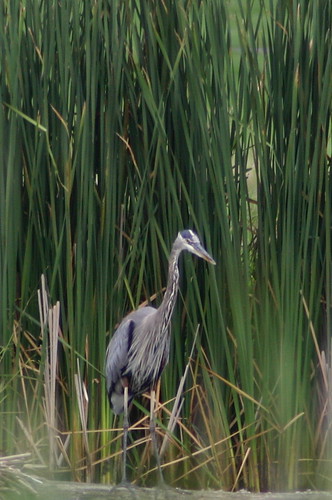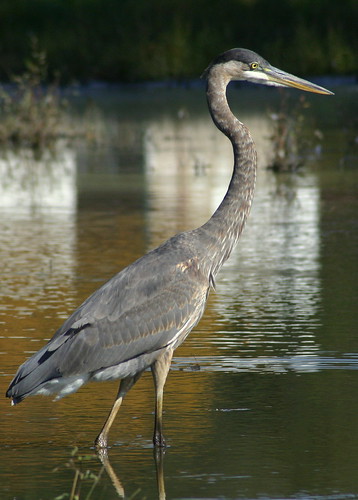The Norwegian Nobel Committee has decided that the Nobel Peace Prize for 2009 is to be awarded to President Barack Obama for his extraordinary efforts to strengthen international diplomacy and cooperation between peoples. The Committee has attached special importance to Obama's vision of and work for a world without nuclear weapons.
Obama has as President created a new climate in international politics. Multilateral diplomacy has regained a central position, with emphasis on the role that the United Nations and other international institutions can play. Dialogue and negotiations are preferred as instruments for resolving even the most difficult international conflicts. The vision of a world free from nuclear arms has powerfully stimulated disarmament and arms control negotiations. Thanks to Obama's initiative, the USA is now playing a more constructive role in meeting the great climatic challenges the world is confronting. Democracy and human rights are to be strengthened.
Only very rarely has a person to the same extent as Obama captured the world's attention and given its people hope for a better future. His diplomacy is founded in the concept that those who are to lead the world must do so on the basis of values and attitudes that are shared by the majority of the world's population.
For 108 years, the Norwegian Nobel Committee has sought to stimulate precisely that international policy and those attitudes for which Obama is now the world's leading spokesman. The Committee endorses Obama's appeal that "Now is the time for all of us to take our share of responsibility for a global response to global challenges."
So, in the words of the committee itself, they awarded the Peace Prize to Mr. Obama for making substantial gains in the diplomatic process, giving people hope, and beginning work towards various peaceful goals, including nuclear disarmament.
Let me step away from achievements, for a moment, to answer another fast criticism of this award. Many have pointed out that the nominations for this prize were due to be postmarked by Feb. 1st, 2009, exactly 12 days after the President took office. So, people have concluded (erroneously) that Mr. Obama received this award before taking virtually any steps as President of the United States. I would like to point out to the world that a nomination is only a nomination. Obviously, someone had high hopes for what Mr. Obama could accomplish in this year, and yes, maybe they submitted the nomination for political reasons. However, I assert that the Nobel Prize Committee is not peopled by idiots or fanboys. I have extremely high respect for their organization, and I hope that you do too.
The Nobel Peace Prize, from the will of Mr. Nobel himself, is to be given to "the person who shall have done the most or the best work for fraternity between nations, for the abolition or reduction of standing armies and for the holding and promotion of peace congresses." The Prize committee, in making its decision, was looking into the last 8 months of the presidency, and not the first 12 days. There were very many nominations for this prize, in fact the most nominations ever. I assert that if they believed that Mr. Obama had not made progress promoting "fraternity between nations" etc. they would have picked one of the other 204 nominees. The list is secret for the next 50 years, but I think we can trust there were some good names on it.
So, has President Obama signed a large peace accord, as President Wilson did before winning the 1919 Nobel Peace Prize? No. Did he help to negotiate peace between two major countries at war, as President Roosevelt did to win the 1906 Nobel Peace Prize? No. I believe, however, that he has made great strides in promoting "fraternity between nations," at the least.
In very short order, President Obama changed the foreign policy of the United States from strong-arm unilateralism to broad-based diplomacy. He immediately appointed important envoys and began new peace talks, including being the first President to open meaningful peace talks with Iran, which, although rocky and far from over, have dramatically improved the relationship between our countries. He made steps to bring our country back under the codes of conduct laid out in the Geneva Convention. He restarted nuclear disarmament talks with Russia, this time, unlike his predecessors, negotiating for a stronger reduction. He paid our debt to and reopened meaningful interaction with the United Nations. And he told the world that not only would we not take unilateral actions, but that we also require the aid of other countries in order to move forward towards peace and disarmament.
Perhaps, in this great century, the people need a flashy achievement. The 2009 Physics Prize, essentially awarded for the invention of fiber optic communication, is pretty cool, as well as immediately tangible. Peace, however, is rarely flashy. Peace is shaped through long negotiation, nurtured by building trusting relationships with sovereign nations, and enacted through policy change.
I do not deny the unbelievable work of people who, every day, all over the world, are working in immediately tangible ways to improve life and promote peace. Yes, these people are extremely deserving of praise. When you look at the wording and the purpose of this particular recognition, however, you find a description of the 'big picture.' Without belittling the work of so many, this particular prize exists for a different reason.
The Nobel Prize Committee, and the Nobel Prizes themselves, exist to encourage and inspire as much as they exist to reward notable achievements. Countless times they have been awarded for progress, and progress surely has been made.
Mr. Obama said this morning that he did not feel he deserved the prize. Mr. President, I must respectfully disagree. Your contribution to the global peace process is already irrefutable, brought forth largely from a willingness to talk and to listen, and to treat other nations with their due respect. You have brought hope to not only the millions in your country, but to billions around the world. We see you as a leader who one day may bring to this Earth a new era, and we hope. Where once we saw immovable obstacles, you have changed the international political dynamic to be a place where diplomacy and cooperation can work.
Mr. President, on behalf of myself, and others whose voices may not be heard this day, I thank you for all you have done already, and I look forward to watching you change the world.


